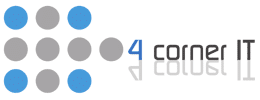Employees Do Their Best Work When They are Comfortable

If employees can remain productive for extended periods of time, their business tends to enjoy rapid growth. Unfortunately, this high level of productivity is not always sustainable, and it eventually slows for a variety of reasons. However, if you can make sure your employees are comfortable, then they will be more likely to maintain a […]
Reopening Your Organization: Key Steps to Take

While many states have at least partially opened, it remains to be seen if they will continue a steady pace forward to an eventual full reopening. Or conversely, if they will decide to pull back for a time. In other words, the process of recovering from a world-wide pandemic seems to be a process of […]
Why Are We Weary of Emerging Technologies?

It seems that there’s a new emerging technology every week. So many of us can be forgiven for having entered into a kind of technology fatigue, in which emerging technologies become something to be avoided, perhaps even feared. Or perhaps we’re just tired of constantly having to try and keep up with them. What Causes […]

